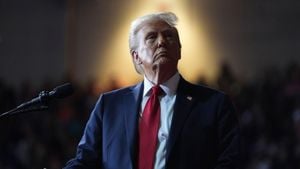Seventeen inmates have tragically lost their lives following violent riots at Ecuador's most notorious penitentiary, the Litoral Penitentiary, located in Guayaquil. This disturbance marks one of the deadliest episodes under the governance of President Daniel Noboa, whose administration has been struggling with rampant prison violence. More than 15 individuals also sustained injuries during the clash, described by authorities as "serious incidents between persons deprived of liberty." Following the uprising, visitation rights were suspended, indicating the severity and unrest within the facility.
The prompt rise in violence at the penitentiary aligns closely with growing drug gang influence, stemming largely from overcrowding and weakened state control over the inmate population. The prison, which was built for around 5,000 inmates, currently holds around 10,000, doubling its intended capacity. President Noboa attempted to combat the rampant violence by placing military control over the nation's most troubled prisons at the start of 2024.
Ecuador’s prisons have earned the grim title of being among the most dangerous and deadly throughout Latin America. A multitude of riots has resulted in more than 400 inmate fatalities since 2021. Last year's horrendous riots and violence included coordinated attacks across multiple facilities, with reports of hostage-taking involving prison guards. The media reported on January incidents involving armed confrontations resulting from tensions among rival gangs.
This latest surge of violence deeply unsettles the Ecuadorian public, as the nation traditionally held a reputation as one of the safest countries within the region. President Noboa previously pledged to rectify this growing insecurity, especially as he enters the presidential race with crime and public safety becoming central campaign issues. His administration's failure to implement strict control over unruly prisons and tackle gang violence has drawn increasing scrutiny.
The Attorney General's office has stated its intention to pursue charges against nine inmates involved in the riot, including notable accusations of murder stemming from the bloodshed. This latest incident has only heightened the urgency for effective reforms to address brutal incidents within Ecuador's prisons, signaling a dire situation for the criminal justice and correctional system.
Even prior to this riot, Ecuador was experiencing tumultuous changes, as violent crimes became common. The murder rate has skyrocketed from approximately six homicides per 100,000 people back in 2018 to around 47 per 100,000 individuals registered this year. The country faces enormous challenges, not only from domestic gang rivalry but also the wider network of powerful drug cartels exploiting weaknesses within governmental structures to destabilize regions.
The Litoral Penitentiary was previously at the heart of violent upheaval, most infamously during the riot of 2021 where 119 inmates were killed. General struggle for control between criminal organizations has turned prisons like Litoral from rehabilitation centers to battlegrounds, where gangs operate freely using contraband arms smuggled from outside the prison walls.
The devastating consequences of this environment reverberate beyond prison walls, impacting communities and their safety. Citizens express frustration over government shortcomings and heightened fears stemming from organized crime and gang violence spilling onto city streets. President Noboa's upcoming electoral campaign is likely to reflect these burgeoning concerns, with voters demanding action and accountability.
Next steps to address the urgent crisis remain under scrutiny, as previously announced military control needs effective execution to translate promises of safety and reform. With the clock ticking, the state must act decisively to restore order, regulate penal facilities, and implement systematic changes to combat growing lawlessness and violence throughout Ecuador. How long can this situation persist?



